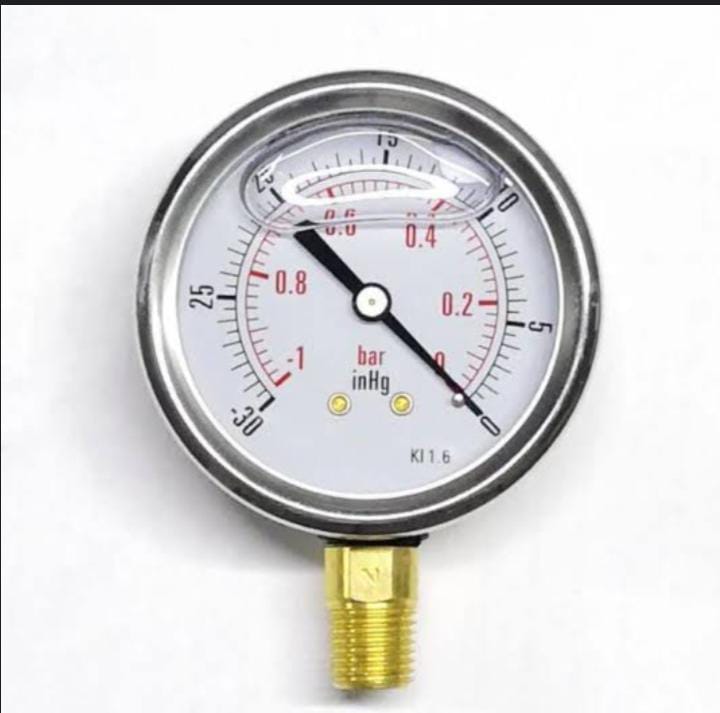Understanding Vacumetros: Your Ultimate Guide to Precision Measurement

Vacumetros, also called vacuum gauges. They’re vital instruments to determine the vacuum system’s pressure. If you’re engaged in research and development industry applications, or automobile maintenance, understanding how vacumetros work and the functions they perform will rise the efficiency and accuracy of your process.
Table of contents
- What is a Vacuometro?
- Types of Vacumetros
- Mechanical Vacumetros
- Electronic Vacumetros
- The Science Behind Vacumetros: Understanding How They Work
- The Future of Vacumetros: Innovations and Trends
- Applications in Different Fields:Industrial,Scientific Research,Automotive Maintenance
- Choosing the Right Vacumetro for Your Needs: Factors to Consider
- Conclusion
- Frequently Asked Question(FAQs)
What is a Vacuometro?
Vacuometros are devices which monitor the pressure in the vacuum. It offers exact readings, which are essential in processes that need control of the environment. The precision of a vacuometro may impact the payoff of testing or manufacturing procedures and the efficiency of various machines.
Types of Vacumetros
Mechanical Vacumetros
Bourdon Tube Gauges:
utilize an oiled tube which is bent as pressure increases by moving a needle in order to indicate the amount of pressure being measured.
Diaphragm Gauges:
Utilize an elastic membrane that alters as a result of pressure changes, which allows the exact measurement.
Electronic Vacumetros
Capacitance Manometers:
These make the use of diaphragms and capacitive sensors that provide highly precise measurements, which are typically employed in research.
Ionization gauges:
Perfect to measure at very low pressure, these gauges depend on the Ionization of gas molecules, and the analysis of the resulting current.
The Science Behind Vacumetros: Understanding How They Work

Vacumetros detect changes in pressure vacuum. They then convert these modifications into useful information. Vacumetros that are mechanical like diaphragm gauges or Bourdon tubes utilize physical motions to display the levels of pressure. Electronic vacumetros like capacitance manometers and Ionization gauges convert changes in pressure into an electrical signal with advanced sensors. Vacumetros with thermal sensors gauge pressure using the measurement of conductivity and convective transfer gases inside the sensor. This technique combines to provide accuracy and precision in readings of pressure to be used in various application.
The Future of Vacumetros: Innovations and Trends
Vacumetros’ future has been expected to see major improvements due to the advancements in technology and developments in the business. Innovations are being made that incorporate the application of IoT technology that allows continuous monitoring and data analytics to improve accuracy and more automated maintenance. The advancements in sensors resulted in smaller and more sensitive vacumetros that are suitable for more uses. In addition, the need towards sustainable and efficient manufacturing has led to the growth of environmentally friendly vacumetros. With the changing world, vacumetros are also evolving with improved accuracy as well as greater high-quality and reliability.
Applications in Different Fields:Industrial,Scientific Research,Automotive Maintenance
Industrial Applications
Within the field of pharmaceutical and semiconductor production, maintaining precise conditions for vacuum is essential to warrant high-quality production and efficiency of processes.
Scientific Research
Labs are laboratories that use HTML0 Vacumetros assure that the experiments remain under the necessary pressure levels that are vital to guarantee reproducibility and precision.
Automotive Maintenance
Vacumetros can also be used in automotive applications to identify difficulties in the efficiency of engines as well as the efficiency of fuel and enables mechanics to find problems quickly.
Choosing the Right Vacumetro for Your Needs: Factors to Consider
Accuracy
The different tasks will require various levels of precision. Make sure that the vacuumometro you select will meet the precise demands of your specific task.
Range
Vacumetros have various operating limitations. Be sure to select one that’s appropriate for the zone of pressure you want to measure.
Durability
For harsh industrial settings Choose vacumetros with a tough exterior capable of enduring even the most extreme conditions, without losing precision.
Maintenance and Calibration
Maintaining and maintaining the calibration is essential to ensure the continuous performance that vacumetros provide. The calibration procedure should adhere with the specifications of the manufacturer, as in accordance with industry standards, to assure the reliability of the instrument.
Conclusion
Knowing about vacuometros and their function is vital for people working with vacuum equipment. When you pick the appropriate type of vacuumometro, and maintain it properly then you’ll be able to get precise pressure measurements and boost efficiency and the quality of work which you can perform.
In industries for scientific research for automotive maintenance, vacuumetros provide more the preciseness necessary to complete success. Get a high-quality vacuum now and experience how it can benefit your company.
Frequently Asked Question(FAQs)
1.What’s the point of a gauge for vacuum?
Vacuum gauges can be used to measure what tension. The pressure they display is the pressure of a real vacuum. The pressure in a vacuum can differ from the pressure of the air. Vacuum gauges are found in compressors and air pumps and different mechanical systems.
2.Is vacuum negative pressure?
Negative Pressure is often called vacuum is a means of decreasing the pressure of air inside containers until it is lower than atmosphere pressure. Negative pressure can be created by instruments, such as the vacuum pump, which takes air molecules and releases them from the vessel.
3.What is the definition of an actual vacuum?
A pressure significantly lower than the atmospheric pressure (760 Torr/mmHg or 29.9 inHg, or 14.7 PSI) is considered the definition of a vacuum. The quality of the vacuum is further divided into a range of values that are nearly unpredictably, but they’re mostly based on instruments used to determine or identify the quality of vacuum.




